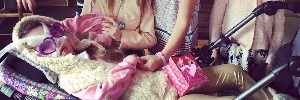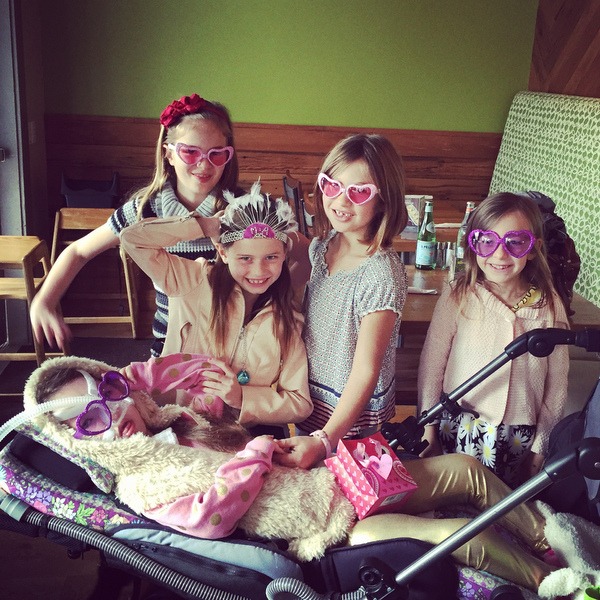Dear Special Needs Parents: Acknowledge Your Child’s Differences
Dear Special Needs Parent,
It’s that time of year — back-to-school season. A time of new beginnings, excitement, and, for the special needs parent, major nervousness. Do yourself a favor — acknowledge your child’s differences. It will help them fit in.
I get it — parents don’t want to label their child, create stigma and highlight their disability. But saying nothing only alienates our special children.
Believe me — I’m one of you. My daughter, Gwendolyn, is severely physically disabled because of the genetic disease spinal muscular atrophy, or SMA, which is much like the more well-known amyotrophic lateral sclerosis (ALS). She has never walked or crawled, has difficulty sitting up, relies on a BiPAP breathing machine to breathe and is nonverbal. There is no missing her differences, which has meant my husband and I have had to confront discussion about her uniqueness from the time she was just a baby.
These discussions are never easy. We are always holding our breath as the questions begin because we are very protective of our daughter’s fiery and confident little spirit. But in order for her to live in the world and have social experiences, she has had to become accustomed to people wondering about her. It’s our job to navigate the conversation in a positive direction. And, the good news is this is possible.
Every year, we type up a letter to send home to every family in our daughter’s school. Yes, every family. From kindergarten to sixth grade. That way, when she’s rolling through the halls, all the kids know about her. When she is assigned a Big Buddy in the upper grades, her Big Buddy’s parents have the tools to answer their child’s questions. When new kindergartners enter the school, those new children and new families can understand her, too.
We write the letter in a way that parents can simply read it directly to their child or they can take portions of it to start a discussion. The letter is not only for the children; the hope is it will frame inclusive language for parents and teachers to make them more comfortable having these often delicate conversations.
We have found over the years that most adults want to be supportive and want to bring their children up to have an open mind. But, adults also come at disability with a lot of adult perspectives that children don’t yet have and a fear of saying the wrong thing, which usually leads to major foot in mouth.
We often see parents shoot their child a dirty look when their child asks, “What’s wrong with her?” and then try to rush them off before they offend us. But that only teaches a child that difference is bad and shouldn’t be discussed. The letter home allows parents to learn inclusive language and how to frame the disability discussion in a positive way, which then allows them to approach your child with acceptance and encourages their children to as well.
The letter is a great starting place. During the first week of school, I also speak to our daughter’s classroom and any other classes that would like me to. Gwendolyn is not present for this, allowing the children an opportunity to ask questions more freely without fear of hurting her feelings. There are always lots of questions, but by talking about her differences and then emphasizing how much she is also just like them, children are eager to find things in common.
In an effort to protect their child from exclusion, many well-meaning special needs parents start school hoping no one notices their child’s differences or with the assumption that adults will already understand how to navigate those differences. We live in an age of inclusion, but to allow a child with special needs to truly fit in among their peers in the mainstream classroom, we must acknowledge what their peers recognize as different. It’s human nature to be curious about what we don’t understand. To pretend everything is typical only confuses children, thus creating a wedge. And here’s the thing — kids are astute and if you don’t answer their questions, they will discuss among themselves and draw their own conclusions. But, if you are the person introducing your child’s differences, then you are in control of the message. And you can make it a positive one!
Gwendolyn is now in second grade and is in the mainstream classroom where she belongs. She loves school. And, what’s more, her peers love her. She participates in PE and hip-hop class, was in the school play, gave several speeches using her iPad and is a full part of the school community. When there are new situations that provides challenges for her, her peers now brainstorm ways for Gwendolyn to be fully involved. And isn’t that what we all want — for our children to be given the opportunity to just be one of the kids?
So, Special Needs Parent, it is up to you. It is up to you to give your community the tools to help foster an inclusive environment. After all, difference isn’t “bad” — isn’t that what we want to teach others? So don’t shy away from that conversation.
Author’s note: Gwendolyn Strong was excitedly preparing to enter the third grade when she passed away from spinal muscular atrophy on July 25, 2015. She was 7 years, 9 months old.
This post originally appeared on The Gwendolyn Strong Foundation.


